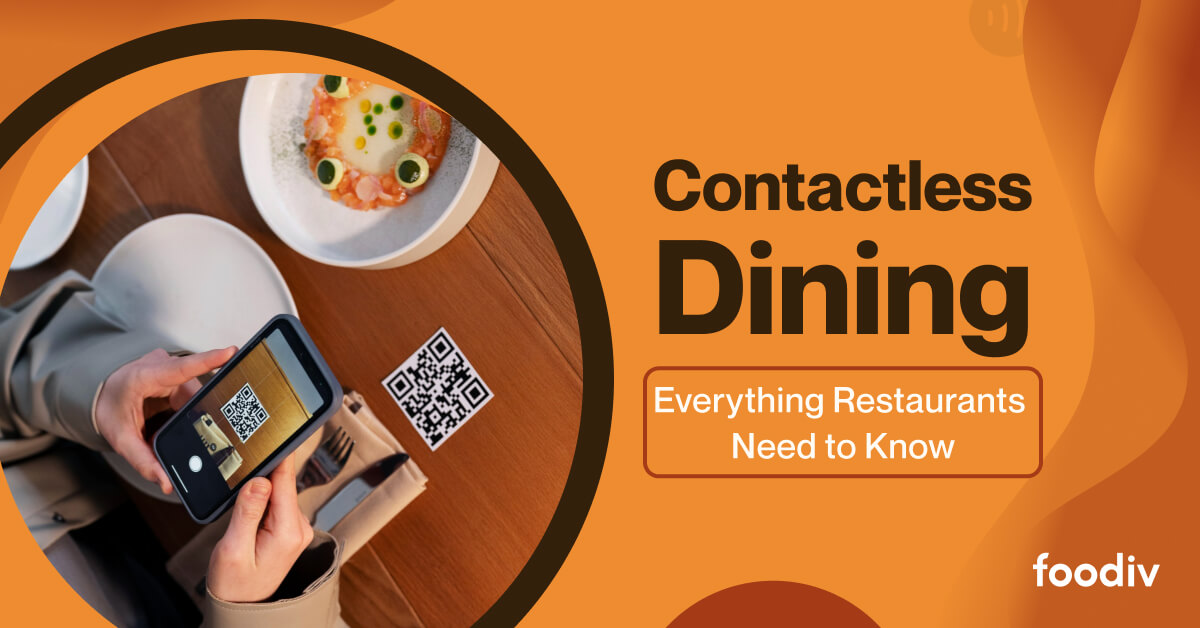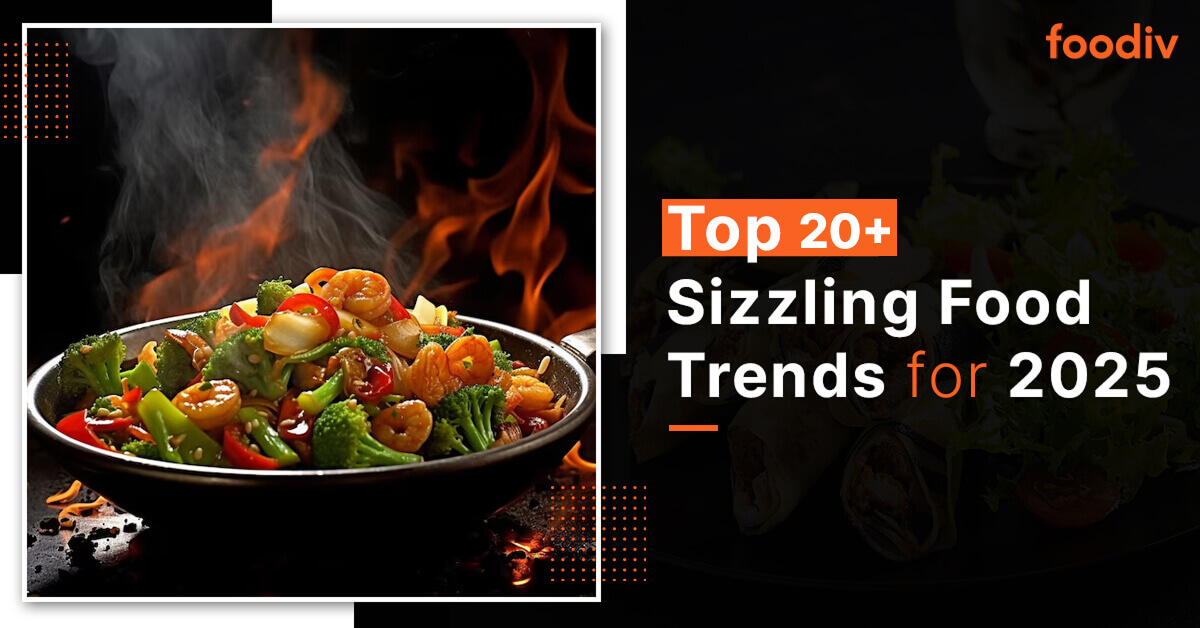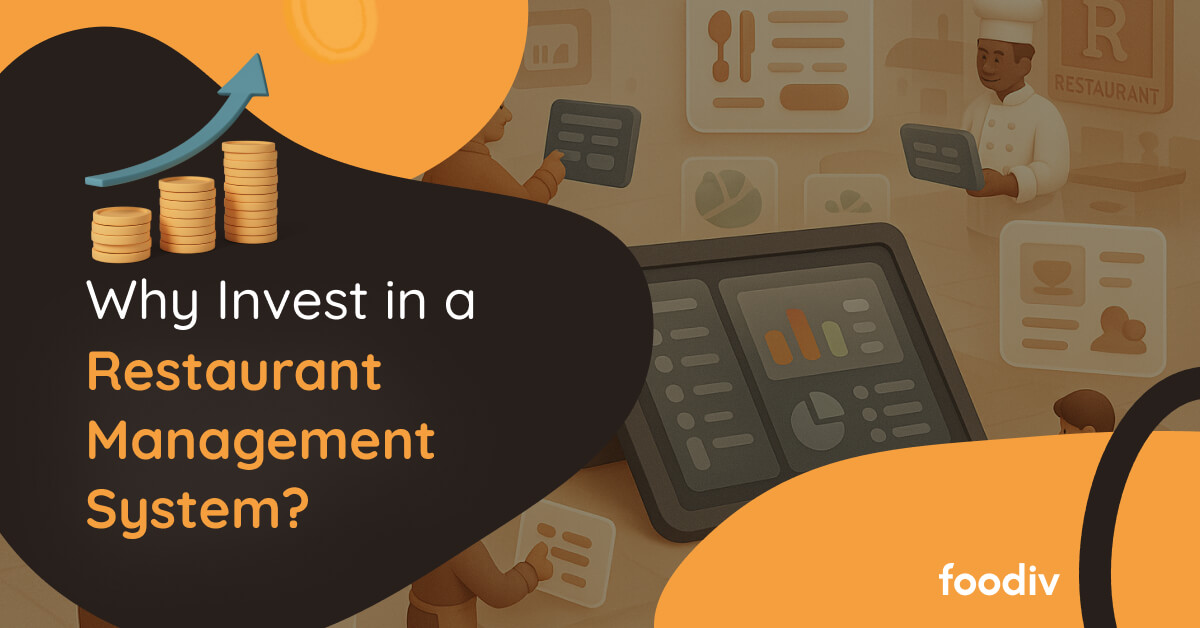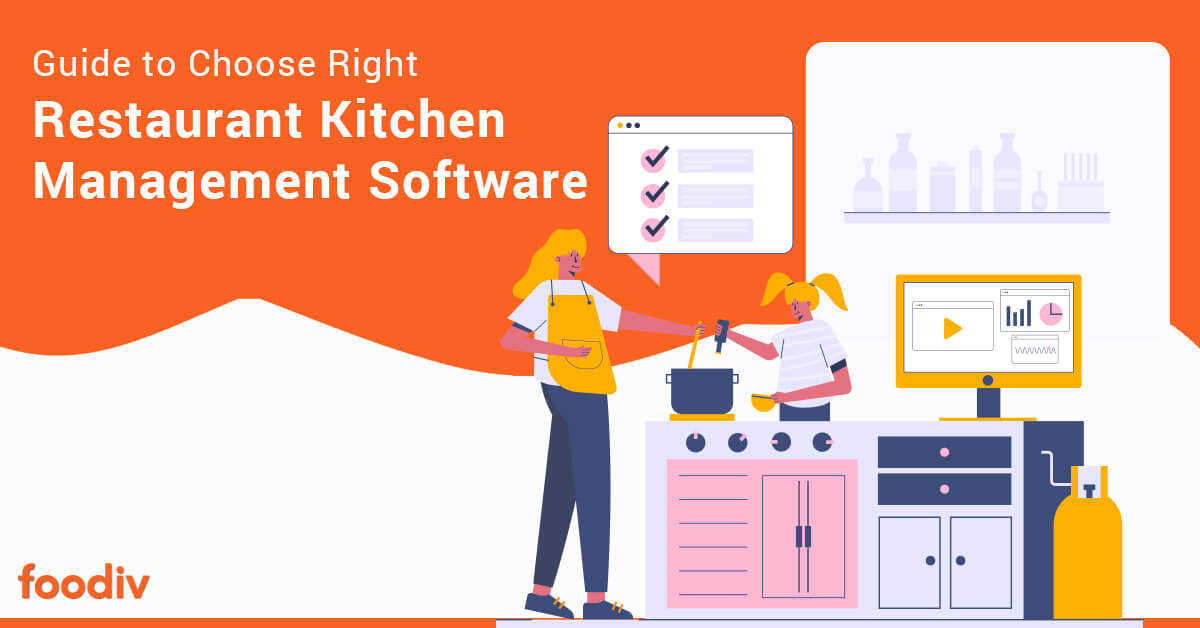
Quick Summary: Are you searching for the right kitchen management software? Are you overwhelmed with the idea of selecting cloud kitchen management software? We have got a solution for you. This article will help you choose the best kitchen management solution for your restaurant of all sizes. Let’s explore;—
Do you need help to keep up with your restaurant efficiency? Do you want to ensure your restaurant follows the best cooking practices and preparation? And, does your restaurant food meet the safety and quality standards? If not, you need to implement restaurant management software immediately. Take another scenario…
Are you considering starting a new cloud kitchen business? You must consider all the questions we have prompted earlier. Following best cooking practices, maintaining food safety standards, and managing demand and supply are the key factors that determine the successful and sustainable start of a cloud kitchen business. Now, we have another question for you. Do you know how to choose the best kitchen management software? No…?
You are not alone; there are many who go through a similar struggle. There are hundreds of kitchen management systems, each claiming to be the best. So, you have a task to choose the best from the list of the best. That’s a real struggle for restaurant owners. And that’s where we jump in, helping you understand which kitchen management system is good for you. And, how to choose the right one. Whether you are a pro restaurateur or planning to start a new cloud kitchen business, this article is a guide to help you implement the right system. Majorly, we’ve covered the following points;
- What is Kitchen Management Software
- What is the Main Function of a Kitchen Management System
- The Component of Kitchen Management Software
- And, How to Select the Best Kitchen Management System
Let’s discuss each point in detail down here;
What is Kitchen Management Software
A kitchen management system of software is an integrated solution that enhances the overall efficiency of your restaurant operation. It does this by streamlining the way your restaurant operates. For example, It centralizes tasks like inventory management, recipe tracking, menu planning, staff scheduling, and reporting. You can also integrate a kitchen management system with a point of sales (PoS) and online food ordering system.
Why Cloud Kitchens Need an Online Ordering System
What is the Main Function of a Kitchen Management System
The primary function of the kitchen management system is to help restaurant managers efficiently manage restaurant operations and cost control in many ways. For example, with the best kitchen management system, you can do the following;
- Minimize food waste by providing real-time tracking, automated stock monitoring, and ingredient management.
- Helps in recipe management, allowing chefs and kitchen staff to create, store, and update recipes, calculate ingredient quantities, and analyze recipe costs.
- Assist in creating and customizing menus, analyzing profitability, and adjusting pricing accordingly with features like menu planning and costing.
- Purchasing and ordering features ensure efficient supply chain management.
Similarly, kitchen management software or a cloud kitchen ordering system can help you do plenty of things. It’s for every restaurant, albeit it’s a must-have software for the cloud kitchen business. You can explore them in detail by contacting your service provider.
Do you want to understand how Kitchen Management Software Work in detail?
The Component of Kitchen Management Software
A cloud kitchen management system or software is a combination of various components that work together to streamline and optimize kitchen operations. Knowing the kitchen management system components will help you select the best from different kitchen management systems. The top components of kitchen management software include;
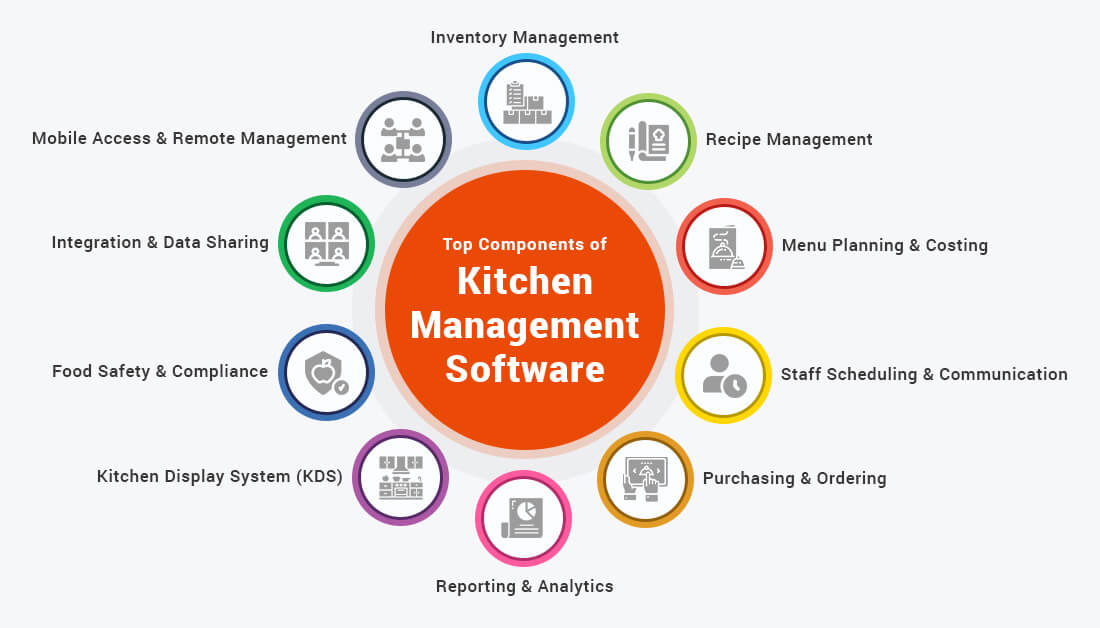
- Inventory Management
- Recipe Management
- Menu Planning and Costing
- Staff Scheduling and Communication
- Purchasing and Ordering
- Reporting and Analytics
- Kitchen Display System (KDS)
- Food Safety and Compliance
- Integration and Data Sharing
- Mobile Access and Remote Management
These are the essential components that every SaaS-based kitchen management system has, albeit you can get them modified based on your requirement.
How to Select the Best Kitchen Management System
Recently, the food service industry has witnessed a massive surge in the adoption of kitchen software systems. According to research, the global kitchen management system market is projected to reach $17.1 billion by 2031 from $4.2 billion in 2021, with a 15.3% CAGR (2022-2031).
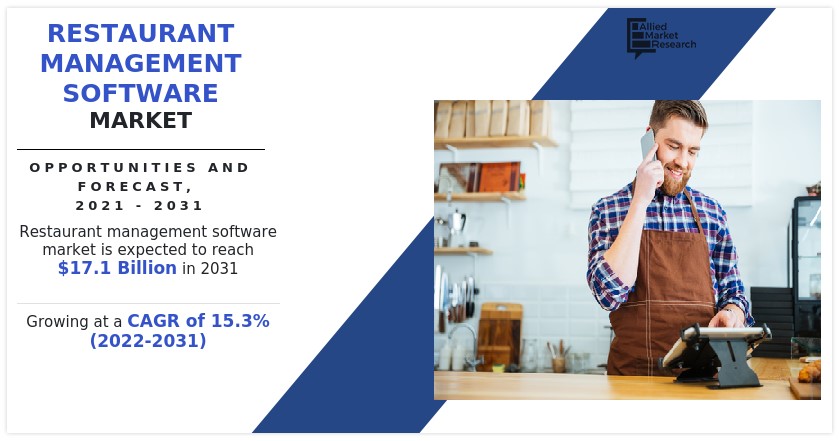
Image Source: Allied Market Research
The statistics clearly show how restaurant management software helps restaurant owners make the most out of the advent. The right restaurant and kitchen management system offers plenty of other benefits. You will be able to serve food orders faster and deliver efficient services to your consumers. So, having the right technology is the need of the hour. In this guide, we have given a step-by-step process to help you choose the best kitchen management software for your business needs. We’ll cover the following points in this section;
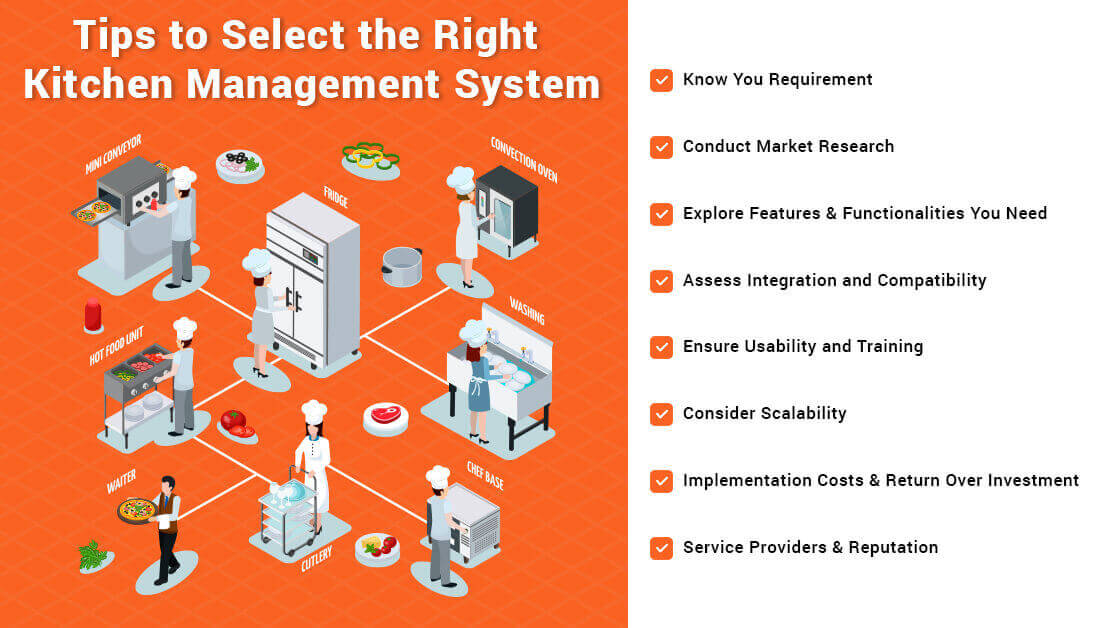
- Know You Requirement
- Conduct Market Research
- Explore Features and Functionalities You Need
- Assess Integration and Compatibility
- Ensure Usability and Training
- Consider Scalability
- Implementation Costs and Return Over Investment (RoI)
- Service Providers and Reputation
Let’s explore these points in detail;
#1: Know You Requirement
Why do you want to implement kitchen management software? What specific purpose do you want to serve with the system, and what is your objective? These are the basic things you need to define. Here’s what you can do;
Identify the Pain Points: Find out what challenge your kitchen face, whether it is inventory management, recipe costing, or staff scheduling that you want to solve with the kitchen management system. There can be one or many pain points. Just note them down.
Define Goals and Objectives: If it is just a recipe, you just need professional recipe management software. However, if it is about everything around the kitchen, you need comprehensive kitchen management software.
#2: Conduct Market Research
You must be wondering if you really need to research the market just to implement kitchen software. Here’s why you need to do this;
There are hundreds of SaaS-based kitchen management software options available in the market. Every service provider claims to offer the best system. Which one is good and really useful for your restaurant? You will know this once you conduct market research. What you need to do is;
Explore Available Options: You can start by exploring kitchen management software from different providers. Now, compare the features, functionalities, and pricing.
Read Customer Reviews And Testimonials: select the company you want to connect with. Once you have chosen your list of favorite companies, you need to explore their testimonials and reviews. You can explore independent sites like Clutch and other review sites to learn about their reviews and the quality of service.
#3: Explore Features and Functionalities You Need
This is the most critical part you need to focus more on. You need to explore the features and functionalities you need in your kitchen management system. Ensure the providers offer every feature and functionality required to run your kitchen flawlessly. Here are the bunch of features that most standard kitchen management software contains;
- Inventory management
- Recipe, management
- Menu planning and costing
- Staff, scheduling, and communication
- Reporting and analytics
Before buying the inventory management system, approach all vendors for a final discussion. Make sure you have examined every feature and functionality that the system has to offer. Let’s discuss the standard feature in detail;
Inventory Management: Inventory is and crucial part of the kitchen. The kitchen management system, with all the required features, such as inventory, tracking, real-time stock updates, and automated reordering capabilities, will help you efficiently manage your kitchen. So, Ensure the software provides robust inventory tracking, real-time stock updates, and automated reordering capabilities.
Recipe Management: To have the best restaurant software, it should have inclusive features such as professional recipe management software. It allows you to create and store recipes, calculate ingredient quantities, and analyze recipe costs.
Menu Planning And Costing: Kitchen management apps help restaurant owners create menus prioritizing profitability and pricing. Choose software that lets you plan menus, analyze profitability, and adjust pricing accordingly.
Staff Scheduling And Communication: When selecting kitchen management software, you need to ensure that the system comes with options such as employees and scheduling seat management and provides tools and internal communication channels. They are very crucial because they ensure a smooth process and high efficiency.
Reporting And Analytics: Reporting and analytics tools in the kitchen management system ensure you get detailed reports on sales purchases, costs, and expenses. With these tools, you can create reports on KPIs and plan the future course of action.
#4: Assess Integration and Compatibility
Before you approach any vendor, you need to ensure that the kitchen management system you want to implement is compatible with all your existing system platforms, devices, and equipment in your restaurants. You need to check two things;
- Check integration capabilities
- Hardware compatibility
Check integration capabilities: If you are buying saas, the Best kitchen management system, you need to check its integration capabilities. For example, you need to ensure the system is capable of being integrated with your existing systems, such as Eww, POS, accounting, and online food ordering platforms.
Hardware compatibility: you may have plenty of devices in your restaurants. Check if the kitchen management system you are implementing is compatible with the existing devices and equipment. If not, talk to your Wenders or service providers and get those compatibility issues solved.
#5: Ensure Usability and Training
Even though every kitchen management software provider claims to offer the best software with easy-to-use and learning features, you need to check the system has what they claim. Majorly, you need to check two points;
- First, a user-friendly interface
- Second, training and supporting teacher
User-friendly interface: the kitchen management software must have an appealing design, smooth navigation, and an easy learning curve. They are crucial because many of your staff may not be familiar with the new system.
Training and support: before you buy a kitchen management system, you need to ensure the providers or Wenders offer enough resources, tutorials, and customer support to give training to your staff and help them make the best use of the software.
#6: Consider Scalability
Select the kitchen management system that offers calibration. If you are starting a new cloud Kitchen restaurant, you must be thinking about growing bigger and bigger. The kitchen management system should not be a barrier to it. The software must accommodate your business, future expansion, and changing needs. Talk to your Wenders and discuss if the software offers additional features or modules that will support you in the future. For example, you can talk about online ordering systems and delivery management.
#7: Implementation Costs and Return Over Investment (RoI)
How much does it cost to implement a kitchen management system? It’s a legitimate question that every restaurant owner asks. So the cost of implementing restaurant management or kitchen management software depends on two things;
- First, the vendor you choose to buy the kitchen management software from
- Second, the quality features and functionalities you want to have in your system
You can evaluate the pricing models and assess the potential return on investment by the following methods.
Pricing structure: You need to self-evaluate whether you want to implement a subscription-based kitchen manager system or invest in a one-time purchase. The pricing model should be purely based on the requirement of your restaurant. For example, if you are a startup, you can initially begin with a subscription model. Once established, you can opt for a one-time purchase, considering the long-term cost implications.
ROI analysis: According to online reports, restaurant owners worldwide have witnessed a 30% increase in sales after implementing a restaurant management system, including online food ordering system. That means you get a complete return on investment. Still, you need to assess the potential return on investment by considering the software’s ability. For example, find out if the cloud kitchen software is able to reduce costs, increase efficiency, and improve overall operations.
#8: Service Providers and Reputation
Last but not least, which restaurant or kitchen management software are you buying? Knowing if the kitchen management software is reliable and can serve all your purposes is crucial. You can know this using the following methods;
Who is the vendor?
You need to check the vendor’s credibility, which you can do by conducting research online. You can also explore the reputation and track record of the software provider. For example, you can explore the case studies, customer base, and industry experience.
Customer support
You must ensure that the kitchen management software you buy comes from reliable customer support. Woe means the kitchen software provider must be capable of offering dedicated customer support and regular software updates. So the system is updated with new and trending features. The system will address the issues and protect data from invaders with regular software updates.
How Does Foodiv Help?
Foodiv is a reliable online food ordering system with integrated kitchen management software. We help you implement the system in your restaurant. Besides, we also help startups with a free consultation, helping them establish a food service business and make it successful. We do it by giving expert advice and helping you understand how to utilize digital solutions to woo the tech-savvy generation. Whether you want to implement a kitchen management system or want a consultation, we are here to help. Let’s connect.


